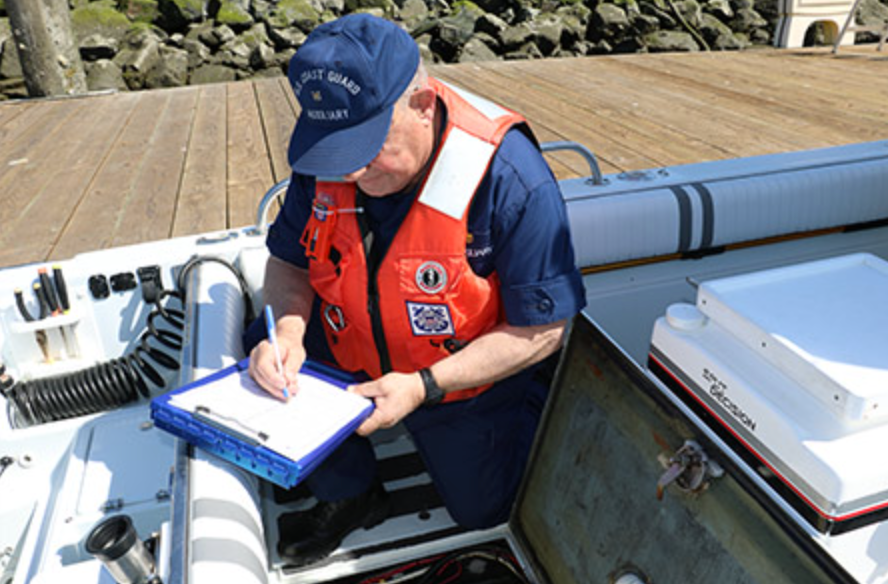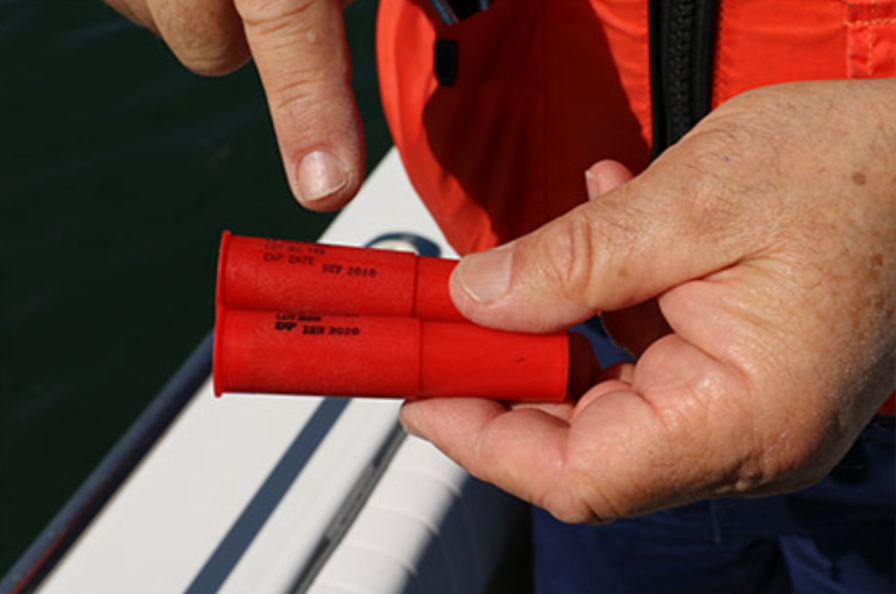Coast Guard Safety Inspections: What You Need to Pass

United States Coast Guard policy requires safety inspections as a method of outreach to the boating public to impress upon it the importance of carrying the necessary safety equipment in case of an emergency. When a boat is properly equipped, passengers can enjoy their time on the water even more with the peace of mind that they are safe.
These preventative inspections can happen at anytime, so it’s important to make sure a boat is always ready. The hard-working men and women of the Coast Guard put their lives on the line when called on to make hazardous rescues at sea so boaters need to prepare for and respect these inspections.
Welcome Aboard
When approached by a Coast Guard vessel for inspection, the boarding officer will announce his or her intention: to identify the vessel, the owner and the operator, check the paperwork and conduct an inspection to be sure it has all the safety equipment required by federal regulations for that classification of recreational vessel. These inspections can typically take place while a boat is en route to its destination.

During an inspection, a boat owner will need to show the vessel registration, which is mandatory, and the operator’s driver’s license, social security number and date of birth, which are voluntary. If the boat is registered in a state that requires a vessel operator to have a safe boating course certification, that must be provided as well. The Coast Guard representatives enter all of this data into a hand-held electronic touch-pad device with a built-in printer.
Next, the officer checks the mandatory safety equipment on board. All PFDs (personal flotation devices) on board much be Coast Guard-approved and properly armed. An approved PFD is required for every person on board a recreational vessel. A throwable floatation device is also required, which can consist of an approved life ring or a flotation cushion.
Make a Checklist
In addition to checking the PFDs, Coast Guard officers will also want to inspect and check the audible signaling device, a horn, which can be an electric horn mounted on the vessel or a hand-held device powered by a compressed air canister. You must also show your boat’s emergency flares to ensure they are within the expiration date. All flares have expiration dates stamped on them and should be properly disposed of and replaced when that date is exceeded. The flares should be kept in a “ditch bag” stowed in the console. Though not required, PLBs (personal locator beacons), waterproof hand-held VHF radios, additional signaling devices and flares are also good to have on board.

Once the inspection is complete, the captain of the inspected vessel signs the touch-pad on Coast Guard’s device. It will print out a boarding report indicating the vessel has no violations or warnings. If the inspection had uncovered any violations, the Coast Guard can issue a summons that could include civil penalties. If the violations are minor in the judgment of the boarding officer, he or she can also issue a warning and require and a follow-up inspection to make sure all requirements are satisfied. It’s important to keep any completed boarding reports aboard your vessel should you need to show them to Coast Guard officials in the future. They can also help you to avoid a repeat inspection within a specific period of time.
The entire inspection lasts about 15 minutes and Coast Guard boarding officers are typically courteous, knowledgeable, professional and willing to answer any questions and provide additional information on the procedure and the equipment requirements.
Proactive types can schedule a free vessel safety check with the Coast Guard Auxiliary at any time by visiting http://wow.uscgaux.info/content.php?unit=054-26&category=1324933710.
To learn more about recreational vessel safety regulations, go to the Coast Guard Boating Safety Resource Center at www.uscgboating.org.